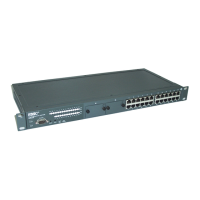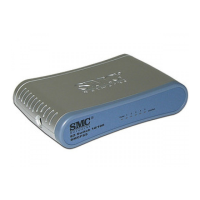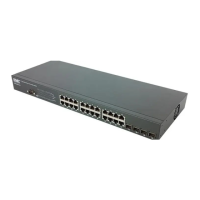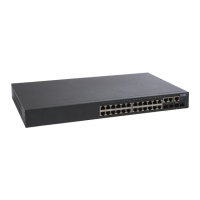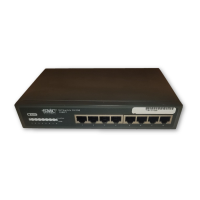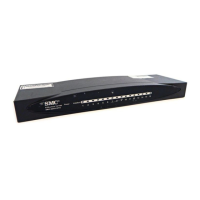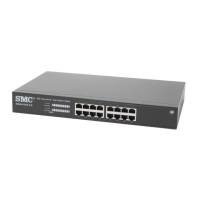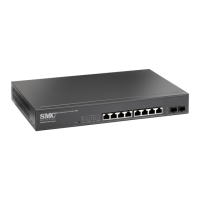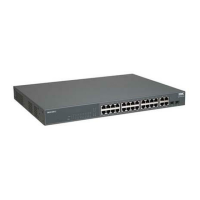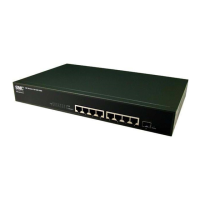S
PANNING
T
REE
A
LGORITHM
C
ONFIGURATION
2-95
• STP Mode – If the switch receives an 802.1D BPDU (i.e., STP
BPDU) after a port’s migration delay timer expires, the switch assumes
it is connected to an 802.1D bridge and starts using only 802.1D
BPDUs.
• RSTP Mode – If RSTP is using 802.1D BPDUs on a port and receives
an RSTP BPDU after the migration delay expires, RSTP restarts the
migration delay timer and begins using RSTP BPDUs on that port.
Command Attributes
Basic Configuration of Global Settings
• Spanning Tree State – Enables/disables STA on this switch.
(Default: Enabled)
• Spanning Tree Type – Specifies the type of spanning tree used on
this switch:
- STP: Spanning Tree Protocol (IEEE 802.1D; i.e., when this option
is selected, the switch will use RSTP set to STP forced compatibility
mode)
- RSTP: Rapid Spanning Tree (IEEE 802.1w) RSTP is the default.
• Priority – Bridge priority is used in selecting the root device, root
port, and designated port. The device with the highest priority
becomes the STA root device. However, if all devices have the same
priority, the device with the lowest MAC address will then become the
root device.
- Default: 32768
- Range: 0-61440, in steps of 4096
- Options: 0, 4096, 8192, 12288, 16384, 20480, 24576, 28672, 32768,
36864, 40960, 45056, 49152, 53248, 57344, 61440
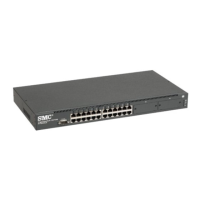
